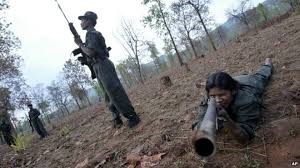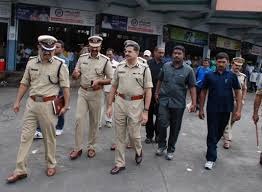 Nalgonda, Telangana: The image of a man in handcuffs slumped over in his seat, his body splattered with blood, after an alleged encounter in which five suspected terrorists were shot dead, has raised suspicions and allegations of excesses by the police in Telangana.
Nalgonda, Telangana: The image of a man in handcuffs slumped over in his seat, his body splattered with blood, after an alleged encounter in which five suspected terrorists were shot dead, has raised suspicions and allegations of excesses by the police in Telangana.
The men were killed in Nalgonda district by a 17-member security team that was escorting them in a police van from Warangal jail to a Hyderabad court 150 km away.
The police said one of the men, Vikaruddin Ahmed, asked to be released from his cuffs to use the toilet and on returning, tried to snatch a weapon. The escort team allegedly opened fire when the other suspects also tried to overpower the security personnel, in an attempt to escape.
Vikaruddin Ahmed was the alleged founder of a local terror outfit Tehreek-Ghalba-e-Islam and the other four men were allegedly his associates.
“I am 100 per cent sure it was a fake encounter. We want a CBI inquiry,” said Vikaruddin’s father Mohammad Ahmed.
Civil rights activists have questioned why 17 security personnel could not have brought five handcuffed men under control inside a closed vehicle without shooting them dead. No policeman was injured.
The Telangana police have denied that the encounter was linked to the killing of policemen last week. Three policemen were killed by suspected activists of SIMI, or the Students Islamic Movement of India. Two of the suspected attackers were shot dead on Saturday in a gunbattle with the police, in which a policeman was killed. Another police officer injured in that encounter died yesterday, the day he became a father.
State police chief Anurag Sharma clarified that the five men killed yesterday were not known to have any link with SIMI, Indian Mujahideen or LeT. They were partially handcuffed as they had in the past attacked policemen, he added.
An inquiry by an executive magistrate and judicial inquiry has been ordered into yesterday’s encounter, following a Supreme Court directive in 2014.



